Experience Tranquility at Xuanzhong Temple: Your Guide to a Cultural Retreat
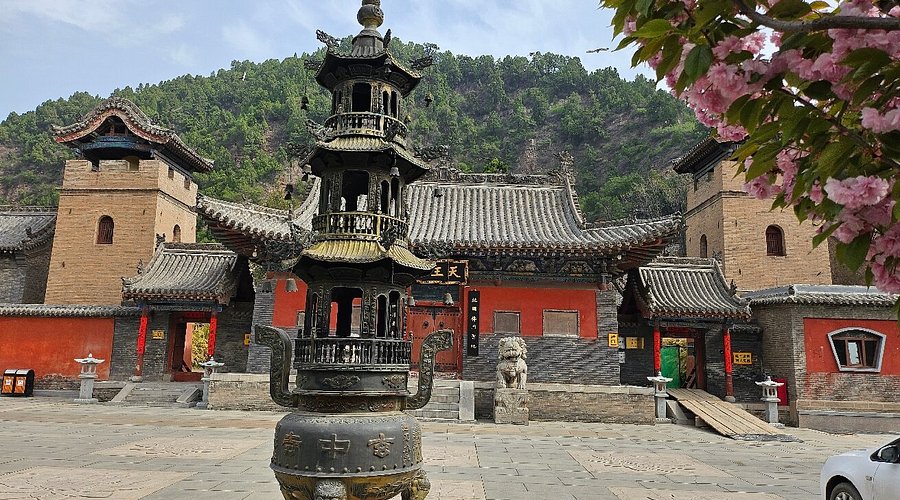
An Essential Guide to Visiting Xuanzhong Temple
In This Guide
- An Essential Guide to Visiting Xuanzhong Temple
- The Rich History and Legends of Xuanzhong Temple
- Main Highlights: What You Absolutely Can’t Miss
- Planning Your Visit: A Practical Guide
- Tickets: Prices, Booking, and Tips
- How to Get There: A Complete Transportation Guide
- Local Cuisine and Accommodation Nearby
- Frequently Asked Questions
- Final Thoughts on Your Trip
Nestled in the serene embrace of Shibi Mountain, Xuanzhong Temple (玄中寺) stands as a magnificent historical monument steeped in the tranquil traditions of Zen Buddhism. Established during the Northern Wei Dynasty in 472 AD, this esteemed temple is not only a spiritual haven but also an architectural marvel that has withstood the test of time, having been rebuilt several times throughout its rich history. As international travelers venture into the heart of Shanxi Province, they will discover Xuanzhong Temple’s unique charm and cultural significance, making it an essential stop for those looking to explore China’s profound historical landscape.
Visitors are greeted by the temple’s impressive wooden pagoda, which serves as a welcoming gateway into the sacred grounds. The surrounding forest provides a picturesque backdrop, where the gentle sounds of nature harmonize with the serene chants of Buddhist monks. The temple is particularly famous for its resident Brown-eared Pheasants, which have become accustomed to the peaceful coexistence with the monks, offering a unique wildlife experience that enchants birdwatchers and nature lovers alike.
For those eager to delve into the spiritual and historical narratives of Xuanzhong Temple, a visit here is more than just an excursion; it is an opportunity to connect with the essence of Chinese Buddhism and appreciate the temple’s role as a pivotal site in the development of the Pure Land Sect. Here, amidst the whispers of ancient history and the scent of sandalwood, travelers can find solace and reflection in a landscape that has inspired generations.
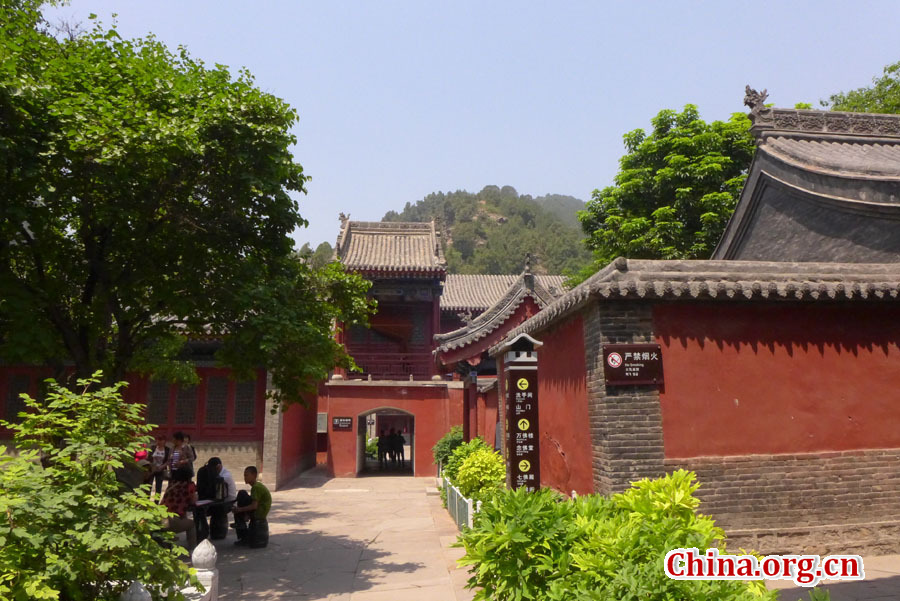
Xuanzhong Temple.
Highlights of Your Visit to Xuanzhong Temple:
- Historical Significance: Discover the origins of the Pure Land Sect and the temple’s role in its development through the teachings of Master Tanluan.
- Natural Beauty: Enjoy the scenic mountain trails and the peaceful forest surroundings, perfect for leisurely walks and birdwatching.
- Cultural Experience: Engage with the local monks and immerse yourself in the spiritual practices still alive within the temple today.
- Unique Wildlife: Witness the rare Brown-eared Pheasants that roam freely, fed and cared for by the temple community.
As you prepare for your journey, be ready to embrace the tranquility and history that Xuanzhong Temple offers—an experience that promises to enrich your understanding of Chinese culture and its enduring spiritual heritage.
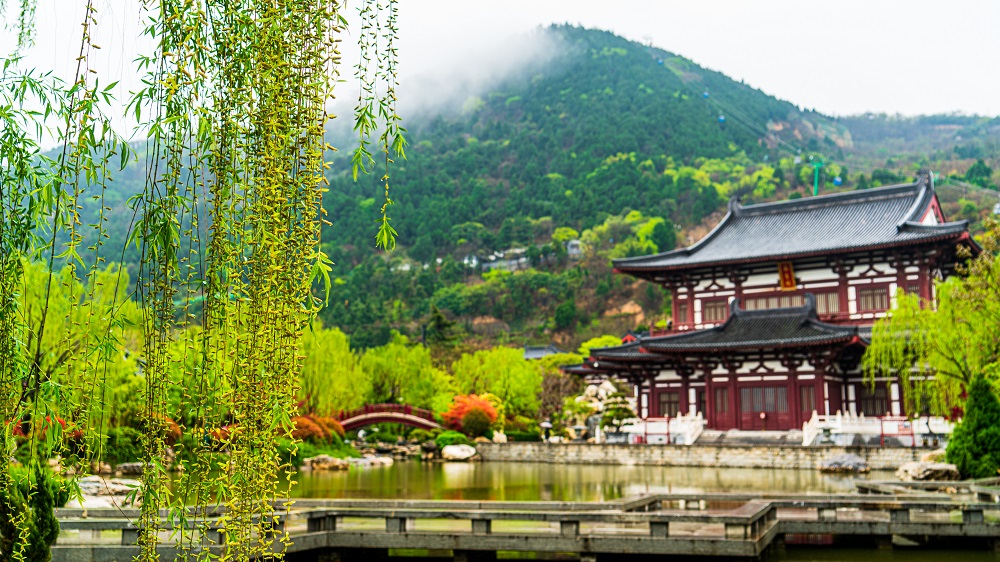
Xuanzhong Temple.
The Rich History and Legends of Xuanzhong Temple
An Exploration of Xuanzhong Temple’s Rich History and Legends
Nestled in the serene landscapes of Shanxi Province, Xuanzhong Temple (玄中寺) stands as a testament to China’s rich Buddhist heritage and the intriguing tales that have unfolded within its walls. Established in the wake of the Northern Wei Dynasty, this temple is not only an architectural marvel but also a significant site for followers of the Pure Land Sect.
Origins and Founding
Xuanzhong Temple was founded in 472 AD, during the second year of the Yanxing era of the Northern Wei Dynasty. The visionary behind this sacred site was Master Tanluan, a prominent figure regarded as the first ancestor of the Pure Land Sect. His teachings emphasized the chanting of Buddha’s name as a path to enlightenment, a practice that continues to resonate with devotees today.
Despite the reverence surrounding Tanluan, some historical discrepancies have arisen regarding his birth date in relation to the temple’s establishment. Historical records suggest that Tanluan was born in 476 AD, leading to debates about the timeline of Xuanzhong Temple’s founding. Such discussions highlight the complexities of historical documentation, particularly regarding events from over a millennium ago. Scholars continue to sift through the remnants of history to piece together a clearer narrative.
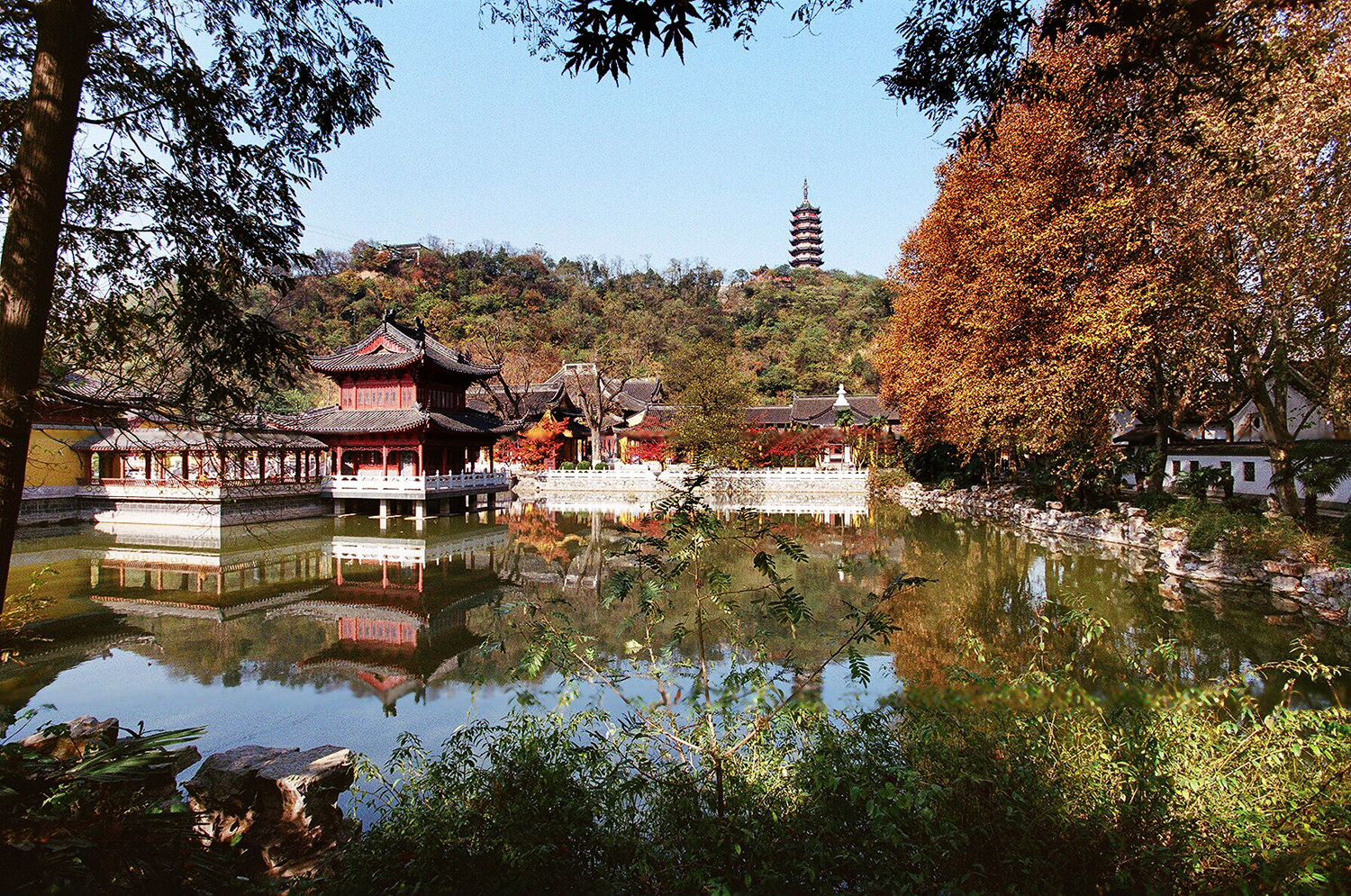
Xuanzhong Temple.
Architectural Significance
Approaching Xuanzhong Temple is an experience in itself. Visitors are greeted by a majestic wooden pagoda at the entrance, which beckons them into the heart of this spiritual sanctuary. The temple’s architecture is both imposing and welcoming, reflecting traditional Chinese styles that have endured the test of time. Over the centuries, the temple has faced destruction and renovation, often emerging more splendid than before.
The temple is adorned with inscriptions that proclaim its significance. The entrance gate, framed by rugged cliffs, bears the inscription “World Pure Land Ancestor Temple, Shenzhou Mahayana Holy Land,” signaling its importance as a spiritual refuge. The archway leading to the temple reads “Pure Land Ancient Temple,” underscoring its status as a cornerstone of the Pure Land faith.
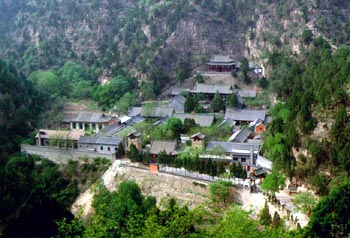
Xuanzhong Temple.
Legends and Unique Wildlife
One of the enchanting aspects of Xuanzhong Temple is its harmonious relationship with nature, particularly with the rare Brown-eared Pheasant. These beautiful birds, often seen wandering freely around the temple grounds, have become symbolic of the site. Their presence is attributed to the compassionate practices of the monks, who have cultivated an environment where wildlife thrives. The pheasants are fed by the monks, allowing them to flourish in this serene setting, embodying the temple’s spirit of coexistence.
Visitors often describe the tranquil atmosphere of the temple, where the sounds of Zen Buddhist chants mingle with the gentle rustle of leaves and the calls of the pheasants. This unique blend of nature and spirituality creates an immersive experience, inviting travelers to reflect and meditate amidst the lush surroundings.
Cultural Significance
Xuanzhong Temple is more than a mere tourist attraction; it is a living testament to the enduring legacy of Chinese Buddhism. As a center for the Pure Land Sect, the temple has played a crucial role in the dissemination of Buddhist teachings throughout the region. Its historical significance draws pilgrims and scholars alike, eager to connect with the rich traditions that shape contemporary Buddhist practice.
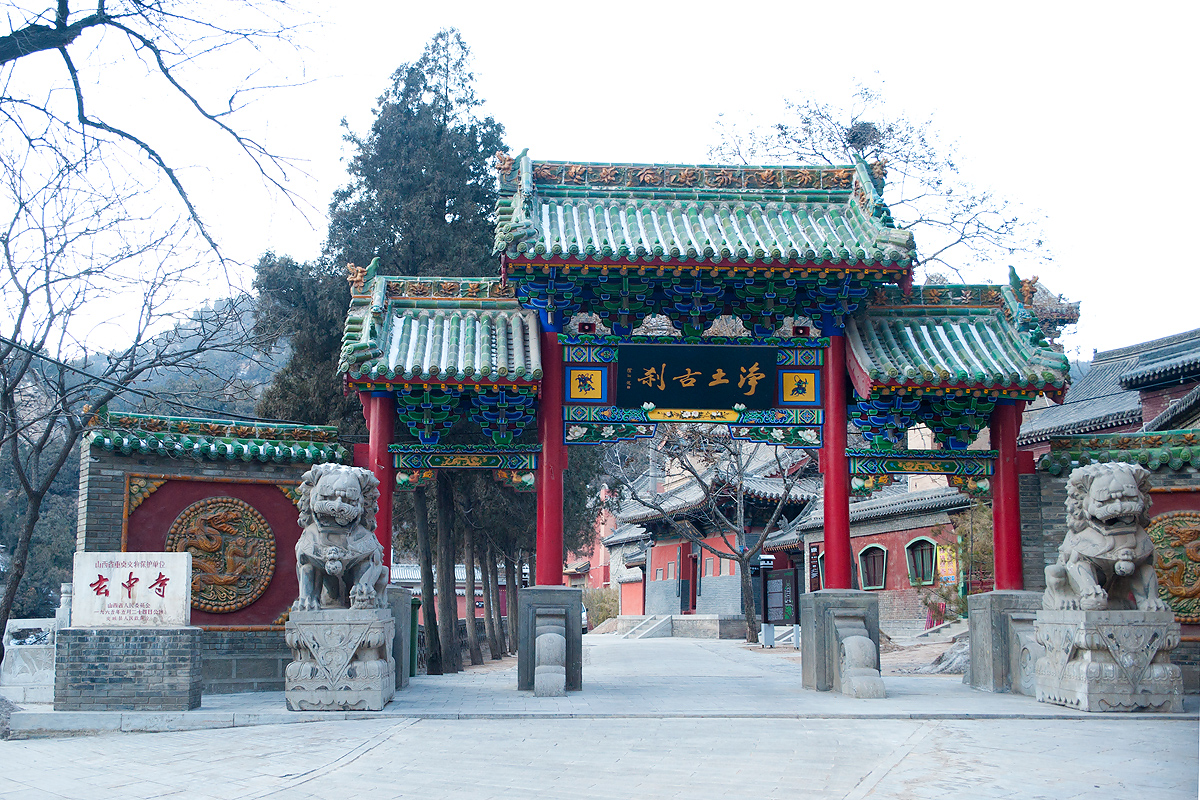
Xuanzhong Temple.
In the shadow of the majestic Shibi Mountain, Xuanzhong Temple stands as a beacon of peace and spiritual reflection, inviting all who visit to delve into its rich tapestry of history and legend. Whether you are a history enthusiast, a nature lover, or a seeker of spiritual solace, Xuanzhong Temple offers a profound glimpse into the heart of China’s cultural and religious heritage.
Main Highlights: What You Absolutely Can’t Miss
Discovering Xuanzhong Temple: Unmissable Highlights
Nestled in the serene embrace of Shibi Mountain, Xuanzhong Temple (玄中寺) is not just a religious site; it’s a treasure trove of history and natural beauty that beckons travelers interested in Chinese culture. Established in the 5th century, this Zen Buddhist monastery has withstood the test of time, offering a unique glimpse into the spiritual and historical fabric of China. Here are the key highlights you absolutely cannot miss during your visit:
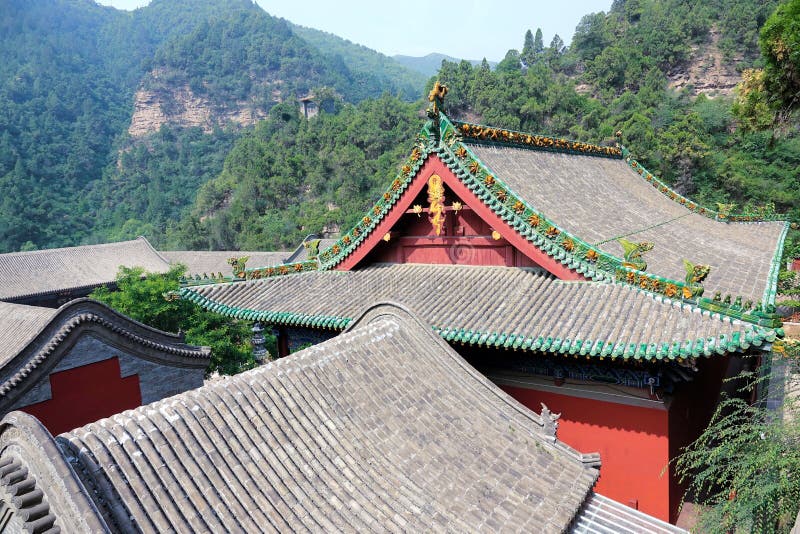
Xuanzhong Temple.
1. Architectural Marvels
- The Grand Pagoda: As you approach the temple, you’ll be greeted by a striking wooden pagoda that serves as a majestic entrance. This architectural gem is a testament to the craftsmanship of the era and stands as a welcoming beacon for pilgrims and travelers alike.
- The Temple Gate: Inscribed with the words “World Pure Land Ancestor Temple, Shenzhou Mahayana Holy Land,” the temple gate is both imposing and inviting. It sets the tone for the spiritual journey that lies ahead.
2. A Sanctuary for Nature
- Brown-Eared Pheasants: One of the unique attractions of Xuanzhong Temple is its famous residents—the rare Brown-eared Pheasants. These beautiful birds roam freely around the temple grounds, undisturbed by the presence of visitors. Observing them in their natural habitat, especially while listening to the soothing sounds of Zen chants, is an unforgettable experience.
3. Historical Significance
- Founding Legacy: Founded in 472 AD by Master Tanluan, the temple is considered the ancestral site of the Pure Land Sect of Buddhism. While some historical details are debated, the significance of Tanluan’s teachings and the temple’s role in the Buddhist community are undeniable. Delve into the rich history that surrounds the temple and learn about its evolution over the centuries.

Xuanzhong Temple.
4. Scenic Surroundings
- Mountain Trails: The temple is enveloped by lush forests and rolling mountains, making it a perfect spot for nature lovers. Explore the trails that weave through the forested landscape, where you can enjoy not only the tranquility of nature but also stunning views of the surrounding area.
5. Cultural Immersion
- Buddhist Practices: Witness the daily rituals of the resident monks and partake in the serene atmosphere that defines Xuanzhong Temple. If you’re lucky, you might even find opportunities to participate in chanting sessions, enhancing your understanding of Zen practices.
6. Historical Artifacts
- Maitreya Statue Ode Stele: Don’t miss the Maitreya Statue Ode Stele, a remarkable artifact that adds depth to the temple’s historical narrative. It’s a connection to the past, offering insights into the beliefs and artistic expressions of the period.
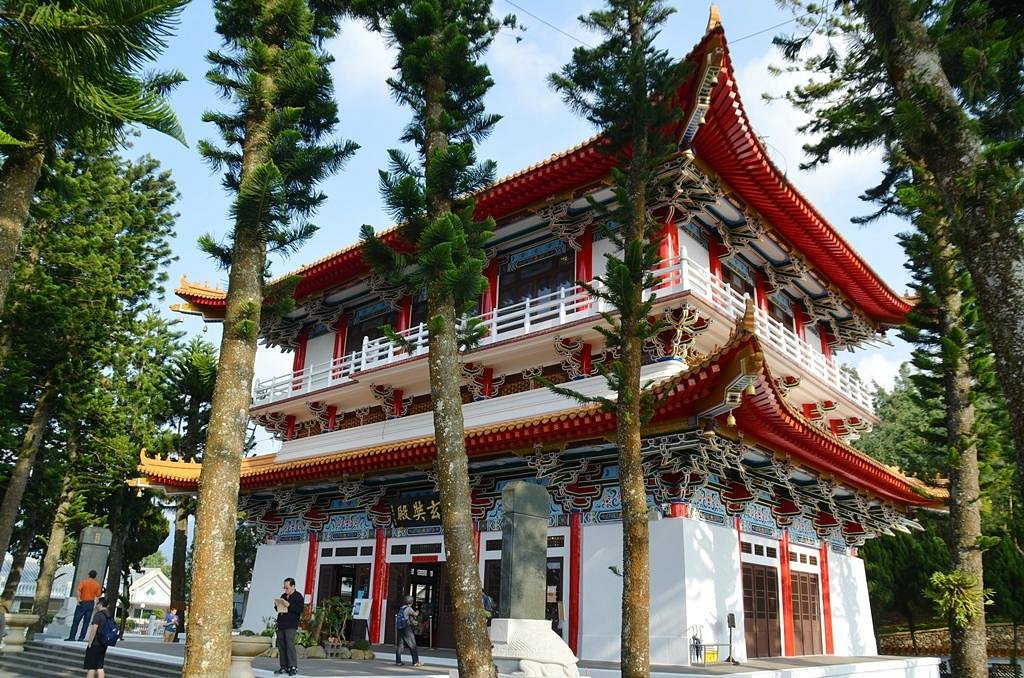
Xuanzhong Temple.
7. Accessibility and Visitor Experience
- Getting There: Located about 10 kilometers northwest of Jiaocheng County, Xuanzhong Temple is easily accessible by car. A winding yet flat mountain road leads you to this hidden gem, ensuring that the journey is as rewarding as the destination.
- Perfect for Short Visits: Whether you’re a history buff, a nature enthusiast, or simply seeking peace, Xuanzhong Temple is an ideal spot for a couple of hours of exploration and reflection.
Visiting Xuanzhong Temple provides a unique blend of history, culture, and nature, making it a must-see destination for anyone traveling through Shanxi Province. Immerse yourself in the tranquility and beauty of this sacred site, and you’ll leave with memories that resonate long after your visit.

Xuanzhong Temple.
Planning Your Visit: A Practical Guide
A Journey to Xuanzhong Temple: Your Practical Guide
Nestled in the serene hills of Shanxi Province, Xuanzhong Temple (玄中寺) offers a captivating blend of history, culture, and natural beauty. Established in the 5th century, this Zen Buddhist monastery is not only a spiritual haven but also a remarkable site for travelers interested in China’s rich heritage. Here’s everything you need to know to plan your visit.
Getting There
- Location: Xuanzhong Temple is located approximately 10 kilometers northwest of Jiaocheng County, in the picturesque Shibi Mountain area.
- Transportation:
- By Car: The most convenient way to reach the temple is by car. If you’re starting from Taiyuan, the provincial capital, the drive takes about 1.5 hours over a distance of 55 kilometers. The winding mountain roads offer beautiful views, so be sure to enjoy the scenery along the way.
- Public Transport: While public transportation options are limited, local taxis and ride-sharing services may be available. Check with your hotel for recommendations.
What to Expect
- Architecture: As you approach Xuanzhong Temple, you’ll be greeted by an impressive wooden pagoda that marks the entrance. The temple complex showcases traditional Chinese architectural styles and has undergone restoration multiple times since its foundation.
- Natural Beauty: Surrounded by lush forests, the temple provides a peaceful retreat. Look out for the rare Brown-eared Pheasants, which roam freely and are accustomed to the monks who feed them. The gentle sounds of nature combined with the chants of Zen Buddhism create a tranquil atmosphere.
- Historical Significance: Founded in 472 AD by Master Tanluan, a key figure in the Pure Land Sect of Buddhism, the temple is steeped in historical significance. It is often referred to as the “Ancestral Temple of the Pure Land Sect,” making it a vital site for those interested in Buddhist history.
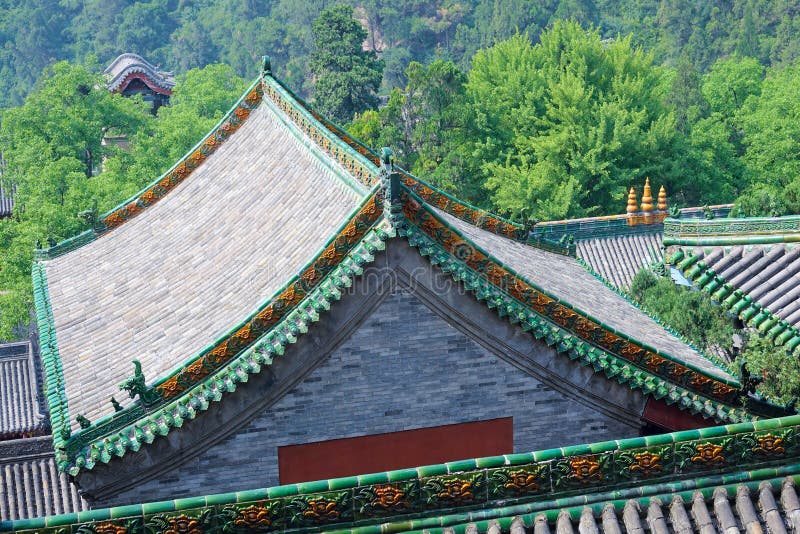
Xuanzhong Temple.
Highlights of Your Visit
- Temple Grounds: Explore the various structures within the temple complex, including the main hall and the prayer areas. Don’t forget to take note of the inscriptions that speak to the temple’s long history.
- Scenic Walks: There are trails leading into the surrounding forests, perfect for a leisurely hike or a serene walk. Be sure to wear comfortable shoes and carry water, as the paths can be uneven.
- Cultural Experience: If you have the opportunity, participate in a meditation session or simply enjoy the peaceful ambiance. The temple often hosts visitors looking to learn about Zen practices.
Practical Tips
- Best Time to Visit: The temple is open year-round, but spring and autumn are particularly beautiful due to mild weather and vibrant foliage.
- Dress Code: As a place of worship, modest attire is recommended. Ensure your shoulders and knees are covered.
- Local Cuisine: Consider sampling local Shanxi dishes in Jiaocheng County before or after your visit. The area is known for its unique flavors and dishes, such as knife-cut noodles and vinegar-based delicacies.
- Duration of Visit: Allocate a couple of hours for a thorough exploration of the temple and its surroundings. This allows you to appreciate both the historical and natural aspects of the site.
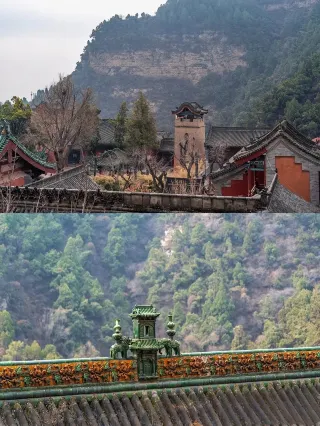
Xuanzhong Temple.
Nearby Attractions
- Wuzetian Memorial: A short distance from Xuanzhong Temple, this site commemorates the only female emperor in Chinese history, Wu Zetian.
- Taishan Temple: Another nearby historical temple worth visiting if you have time.
With its rich history, breathtaking surroundings, and spiritual significance, Xuanzhong Temple is a must-visit for anyone interested in the depth of Chinese culture and Buddhism. Prepare to immerse yourself in a slice of tranquility and history that has stood the test of time.
Tickets: Prices, Booking, and Tips
Visiting Xuanzhong Temple is an enriching experience, steeped in history and surrounded by stunning natural beauty. As you plan your visit to this serene Zen Buddhist monastery, here’s everything you need to know about tickets, pricing, booking, and some handy tips to enhance your exploration.
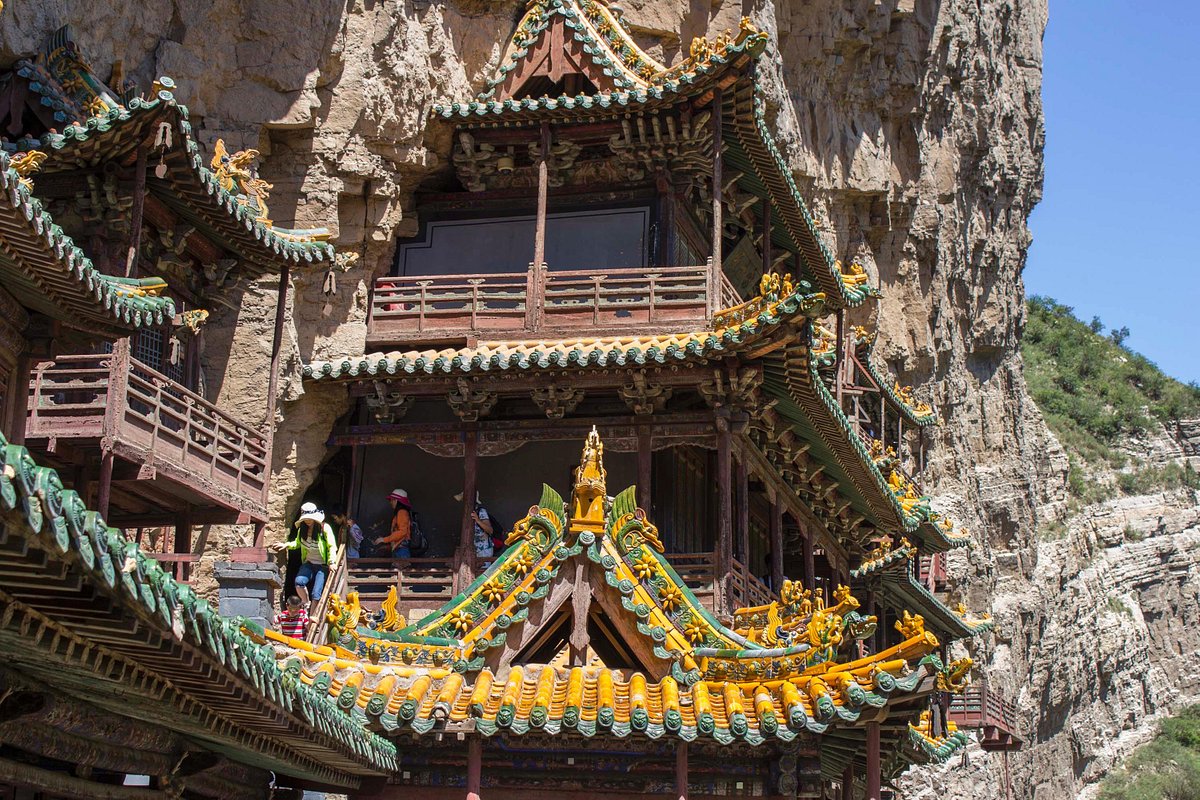
Xuanzhong Temple.
Ticket Information
-
Admission Fee: The entrance to Xuanzhong Temple is quite affordable, typically around ¥30 (approximately $5) per person. This fee grants you access to the temple grounds, allowing you to immerse yourself in its historical significance and tranquil atmosphere.
-
Discounts: Reduced ticket prices may be available for students and senior citizens, so be sure to carry valid identification if you qualify for any discounts.
Booking Tickets
-
On-Site Purchase: Tickets are generally purchased on-site at the entrance of the temple. This means you can avoid the hassle of online bookings and simply enjoy the scenic drive to the site.
-
Group Visits: If you are traveling with a group, consider contacting the temple administration in advance. They may offer group rates or guided tours that provide deeper insights into the temple’s history and significance.
Tips for a Memorable Visit
-
Best Time to Visit: Aim to visit early in the morning or late afternoon. These times not only allow you to avoid crowds but also provide a stunning backdrop of soft morning light or the warm hues of sunset for photography.
-
Explore the Surroundings: The temple is nestled in the lush Shibi Mountain area, making it an excellent spot for a nature walk. Keep an eye out for the resident Brown-eared Pheasants, which are often seen wandering the grounds, adding to the temple’s charm.
-
Guided Tours: While the temple offers a serene atmosphere for self-exploration, consider joining a guided tour if available. This can provide deeper insights into the temple’s history, architectural features, and its significance in the Pure Land Buddhist sect.
-
Bring Cash: While the admission fee is low, some local vendors or nearby eateries may not accept credit cards. Having some cash on hand will ensure you can fully enjoy local snacks and souvenirs.
-
Respectful Attire: As a place of worship, it’s advisable to dress modestly. This not only shows respect for the cultural significance of the temple but also enhances your overall experience in this spiritual environment.
Getting There
Xuanzhong Temple is located approximately 10 kilometers northwest of Jiaocheng County, accessible by a scenic drive that takes around 1.5 hours from Taiyuan, the capital of Shanxi Province. The winding roads through the mountains add to the overall allure of your journey.
By following these tips and understanding the ticketing process, you are sure to have an enriching visit to Xuanzhong Temple, where history, nature, and spirituality converge in a peaceful setting.
How to Get There: A Complete Transportation Guide
Getting to Xuanzhong Temple: Your Guide to Transportation
Nestled in the serene Shibi Mountain, Xuanzhong Temple is a treasure of Chinese history and culture, drawing visitors not only for its spiritual significance but also for its breathtaking natural surroundings. Whether you’re coming from a nearby city or planning a longer journey, this guide will help you navigate your way to this enchanting temple.
Arrival by Air
The nearest major airport to Xuanzhong Temple is Taiyuan Wusu International Airport (TYN), which is approximately 55 kilometers away. This airport serves several domestic and international flights, making it a convenient entry point for international travelers.
- Flight Options: From major cities like Beijing, Shanghai, or Guangzhou, you can find direct flights to Taiyuan.
- Airport Transfer: Once you arrive, you can choose from a variety of transportation options to reach the temple.
Traveling from Taiyuan to Xuanzhong Temple
- By Car: The most straightforward method to reach Xuanzhong Temple from Taiyuan is by car. The journey takes about 1.5 hours along well-maintained roads. Here are the steps:
- Route: Take the G55 (Huanghe Expressway) heading west from Taiyuan.
-
Scenic Views: As you drive, enjoy the picturesque landscapes of Shanxi province, characterized by rolling hills and lush forests.
-
Car Rental: If you wish to explore at your own pace, consider renting a car at the airport. Most major rental companies operate here, and having your own vehicle allows for impromptu stops along the way.
-
Public Transport: For those preferring public transport:
- Bus: There are buses available from Taiyuan to Jiaocheng County. Look for buses heading to Jiaocheng at the Taiyuan Long-distance Bus Station. The ride typically takes around 2 hours.
- Local Transport: Upon reaching Jiaocheng, you can take a local taxi or ride-sharing service to the temple, which is about 10 kilometers northwest of the county center.
Experience the Journey
Traveling to Xuanzhong Temple is as much about the journey as it is about the destination. The route features winding mountain roads and scenic views that captivate the senses. Keep an eye out for the iconic Namo Amitabha stone tablet, a symbolic marker that indicates you are nearing the temple grounds.
Tips for the Journey
- Timing: It’s advisable to leave early in the morning to enjoy the tranquility of the temple and the surrounding nature before the crowds arrive.
- Navigation: Make sure to have a GPS or a reliable map app handy, as some rural areas may have limited signage in English.
- Local Culture: Respect the local customs and the serene atmosphere of the temple; silence is appreciated as you explore the sacred grounds.
Final Thoughts
Whether you’re a history enthusiast, a nature lover, or simply seeking spiritual solace, the journey to Xuanzhong Temple is an unforgettable experience. With this guide, you’ll be well-equipped to make your visit smooth and enjoyable. Happy travels!
Local Cuisine and Accommodation Nearby
Savoring Local Flavors and Finding Comfortable Stays Near Xuanzhong Temple
As you embark on your journey to Xuanzhong Temple, nestled in the tranquil embrace of Shibi Mountain, take a moment to indulge in the rich culinary offerings and comfortable accommodations that Jiaocheng County has to offer. This area is not only a haven for history lovers but also a delight for food enthusiasts and travelers seeking a cozy place to rest.
Local Cuisine
Exploring the flavors of Shanxi Province is an essential part of your visit. Here are some local delicacies to savor:
-
Shanxi Noodles (刀削面): These hand-sliced noodles are a must-try. Typically served with a savory broth or stir-fried with seasonal vegetables, the noodles boast a delightful chewy texture.
-
Sour Vinegar (老陈醋): Renowned throughout China, Shanxi aged vinegar is a staple condiment. Be sure to taste dishes that incorporate this rich and tangy vinegar, enhancing the flavors of your meal.
-
Fenjiu (汾酒): While exploring, don’t miss the chance to sample Fenjiu, a traditional Chinese liquor made from sorghum. Its unique taste and smooth finish make it a perfect accompaniment to local dishes.
-
Steamed Bread (馒头): A staple in the region, these fluffy buns are often served with various meat dishes or vegetable stir-fries. They provide a comforting base for your meals.
-
Braised Lamb (羊肉): With lamb being prevalent in Shanxi, try braised lamb dishes seasoned with aromatic spices. They are tender, flavorful, and perfect for warming you up after a day of exploration.
Dining Options
While exploring the area, you’ll find several restaurants and eateries that showcase these local flavors:
-
Jiaocheng Restaurant (交城县餐馆): This local favorite offers a range of traditional dishes, including their famous Shanxi noodles and braised lamb. The cozy atmosphere makes it a great spot for unwinding after your visit to the temple.
-
Shanxi Flavor House (山西味道): Known for its authentic regional cuisine, this restaurant is praised for its sour vinegar dishes. Don’t forget to ask for their signature noodle soup!
Comfortable Stays
After a day filled with exploration and culinary delights, you’ll want a comfortable place to relax. Here are some accommodation options near Xuanzhong Temple:
-
Jiaocheng Hotel (交城宾馆): A well-rated hotel that offers modern amenities and a welcoming atmosphere. This hotel is conveniently located, making it easy to access the temple and local dining options.
-
Shanxi Guesthouse (山西宾馆): This guesthouse provides a cozy and homely environment, with friendly staff ready to assist you. Enjoy a restful night’s sleep and a hearty breakfast before heading back out to explore.
-
Xiangshan Resort (香山度假村): For those looking for a bit of luxury, this resort offers stunning views of the surrounding mountains and elegant rooms. It’s an ideal place to unwind after your adventures.
Conclusion
As you immerse yourself in the serene beauty and historical significance of Xuanzhong Temple, don’t overlook the opportunity to indulge in the local cuisine and find a comfortable place to stay. The flavors of Shanxi and the warm hospitality of Jiaocheng County are sure to enhance your travel experience, leaving you with cherished memories of this enchanting region.
Frequently Asked Questions
Frequently Asked Questions about Xuanzhong Temple
1. Where is Xuanzhong Temple located?
Xuanzhong Temple is situated about 10 kilometers northwest of Jiaocheng County in Shanxi Province, China. The temple is nestled in the scenic Shibi Mountain area, making it a tranquil destination surrounded by nature.
2. What is the historical significance of Xuanzhong Temple?
Founded in 472 AD during the Northern Wei Dynasty by Master Tanluan, Xuanzhong Temple is recognized as a significant site for the Pure Land Sect of Buddhism. It has been destroyed and rebuilt several times throughout its history, reflecting the rich tapestry of Chinese Buddhist heritage.
3. What can visitors expect to see at the temple?
Visitors will encounter an impressive wooden pagoda at the entrance, beautiful ancient architecture, and serene surroundings. The temple is also known for its resident brown-eared pheasants, which have adapted to the peaceful environment created by the monks. The sounds of chanting and the scent of sandalwood contribute to a unique spiritual atmosphere.
4. How do I get to Xuanzhong Temple from Taiyuan?
The temple is approximately 55 kilometers from Taiyuan, the capital of Shanxi Province. Travelers can reach Xuanzhong Temple by car, which typically takes around 1.5 hours. Local transportation options, such as taxis or rental cars, are available for convenience.
5. What is the best time to visit Xuanzhong Temple?
The temple can be visited year-round, but spring and autumn are particularly lovely due to mild weather and beautiful natural scenery. Morning visits are recommended for a peaceful experience, allowing visitors to enjoy the tranquility of the surroundings.
6. Are there any facilities available for visitors?
While Xuanzhong Temple is primarily a religious site, basic visitor facilities may include rest areas and small shops selling local snacks or souvenirs. However, it’s advisable to bring water and snacks, especially if you plan to explore the surrounding forest trails.
7. Can I take photographs inside the temple?
Visitors are generally allowed to take photographs in the temple grounds; however, it is important to respect the sanctity of the space. Always check for signs or guidelines regarding photography, especially in areas where worship is taking place.
8. What other attractions are nearby?
In addition to Xuanzhong Temple, travelers can explore other nearby attractions such as the Wuzetian Memorial and Taishan Temple, both of which offer insights into the rich history of the region. The surrounding natural environment also provides opportunities for hiking and birdwatching, making it an ideal spot for nature lovers.
Final Thoughts on Your Trip
As you conclude your journey to Xuanzhong Temple, take a moment to reflect on the rich tapestry of history and culture that this sacred site encapsulates. Nestled in the serene embrace of Shibi Mountain, the temple invites you to explore not only its architectural beauty but also its spiritual significance as a cornerstone of the Pure Land Sect.
Key Takeaways from Your Visit:
-
Historical Significance: Founded in 472 AD, Xuanzhong Temple stands as a testament to the enduring legacy of Buddhist thought and practice in China. The stories of its founder, Master Tanluan, and the temple’s evolution through centuries of reconstruction resonate deeply, connecting you with the spiritual lineage of the region.
-
Natural Beauty: The surrounding forest adds an enchanting backdrop to your visit. The opportunity to spot the rare Brown-eared Pheasant amidst the tranquil sounds of Buddhist chants creates a unique experience, merging nature with spirituality.
-
Cultural Immersion: Engaging with the local monks and observing their harmonious relationship with the environment fosters a deeper understanding of Zen principles. This cultural exchange enhances your appreciation for the Buddhist way of life that has thrived here for over a millennium.
As you depart from Xuanzhong Temple, consider how this experience has enriched your understanding of Chinese history and culture. May the tranquility and wisdom of this sacred space accompany you on your future travels, inspiring you to seek out the stories hidden within the landscapes you explore. Safe travels!